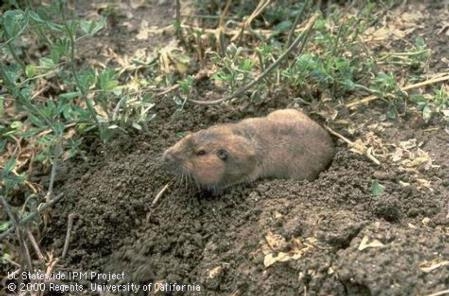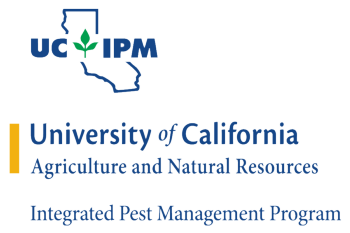By Penny Pawl, U. C. Master Gardener of Napa County
For the last three years I have been battling gophers in my garden. They have pulled artichoke plants down their hole and last summer took out my peppers and eggplants. A young fig tree had only a chewed-on place where its roots had been. In desperation I bought wire cages to plant in.
In my backyard the gophers have taken out every Liriope (mondo grass) and made massive tunnel systems. I stepped in one and my foot went in up to my ankle. I could see inside the tunnel. I left it open but it was closed the next morning so I know there is still a gopher moving actively under my garden.
I know many people are successful using traps to catch and kill gophers but I don't have the intestinal fortitude for that. So over the years I have resorted to other methods. On occasion I have put things down their runways to chase them away, including lighted road flares, dog manure and a hose of running water. I also chased one gopher out of his hole and used a pitchfork to end his life. But none of these actions got rid of the devils.
And what happens to all that soil they moved? I occasionally see a pile, a tell-tale sign of gopher activity, but I don't see big piles.
Their tunnels can affect plants by allowing water to flow underground and by drying out roots that reach that level.
Since gophers have decimated whole areas in my garden, I have started to research just what plants they won't eat. I also had my vegetable beds lined with hardware cloth to keep them out. That approach seems to be working but they do burrow around the beds seeking a way in.
I found a website that has gathered opinions on what plants are gopher proof (https://www.mostlynatives.com/plant-characteristics/gopher-resistant). It lists native plants that seem to be uninviting to gophers. I have also found a few non-natives that don't seem to attract them. If a plant is not to their liking, they move on.
Unlike moles, which are carnivores, gophers are vegetarians and live on many kinds of plants. Once they leave the nest, they are solitary animals and only meet to mate. Their time in their tunnels is spent building up their larder for winter. Their tunnels may be 200 feet long. My husband once dug a gopher out that had gone into a bed we were preparing. He was about three feet deep in his den. They dig deep and wide.
Most plants that don't taste good to a gopher also tend to be drought tolerant so you can kill two birds with one stone. The plants in my garden that gophers have not touched are nandina, fortnight lily, lily of the Nile, daylilies, salvias, hellebores, society garlic, monkey flower and verbascum, to name a few. I plan to use more of these in my landscape.
Recently, my gophers have been busy in a new area. They have almost completely taken out my mondo grass. When they finish, I will plant something they don't like.
I have started to use underground buzzers to drive gophers away from plants they eat. They were pulling the roots off my milkweed, so I set buzzers up on either side. The noise-making devices seemed to stop them, so I have invested in a few more to put around the yard.
Next workshop: “Cool-Season Vegetables: Now is the Time to Plan and Start” on Saturday, August 10, from 9:30 to 11:30 a.m., at the University of California Cooperative Extension, 1710 Soscol Avenue, Napa. Repeated on Sunday, August 11, from 1 p.m. to 3 p.m. in Yountville. For more details & online registration for the Napa workshop: http://napamg.ucanr.edu. Or call 707-253-4221. For the Yountville workshop, go to Online Yountville registration or telephone the Parks & Recreation Department at 707-944-8712.
The UC Master Gardeners are volunteers who provide UC research-based information on home gardening and answer your questions. To find out more about upcoming programs or to ask a garden question, visit the Master Gardener website (http://napamg.ucanr.edu) or call (707) 253-4221 between 9 a.m. and noon on Mondays, Wednesdays or Fridays.
Attached Images:

